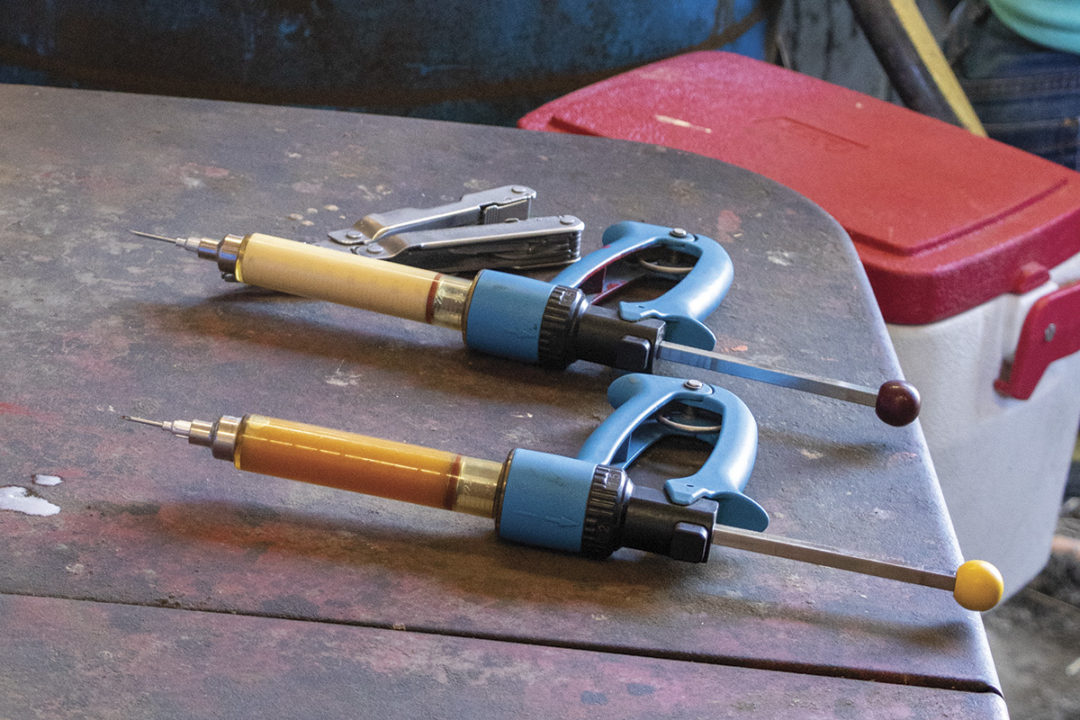Vaccines are great preventative measures producers can use to protect their cattle, but that’s only when they work properly. There are a multitude of reasons why vaccines can fail, and knowing solutions will help protect and prevent vaccine failure within your herd.
A typical vaccine protocol is going to look different for each farm or ranch. What works for one operation, management system or geographical location may not work for another, says Justin Kieffer, a clinical veterinarian at Ohio State University.
Reasons vaccines fail
“There are three primary reasons that vaccines fail,” says Joe Gillespie, senior professional service veterinarian at Boehringer Ingelheim Animal Health USA Inc. “First is the vaccine handling. Second is the animal’s immune system capability of mounting an immune response to that vaccine. And third is whether a commercial vaccine is available for a particular pathogen, bacteria or virus.”
More often than not, rather than a vaccine failing, there is another reason it’s not performing like it should, says Amelia Woolums, a professor in Mississippi State University’s Department of Pathobiology and Population Medicine. This includes the possibility that the illness cattle are experiencing is due to a different pathogen or strain than the one vaccinated for, so rather than the vaccine actually failing, it just appears like it does.
“Another reason vaccines may not work like they should is that they weren't given at the proper time, and the animal didn't have enough time to mount immune response,” Woolums adds. “Generally speaking, you need to have two doses of a vaccine, given a few weeks apart, to have the best chance of the vaccine really working. But because of management constraints, producers sometimes give vaccines when it's convenient, rather than when it’s best for the animal.”
Other reasons a vaccine may fail include environmental factors, like temperature and weather conditions, an animal’s level of stress, the animal’s nutritional quality and level of dehydration at the time of the vaccination, says Chris Chase, a professor in South Dakota State University’s Department of Veterinary and Biomedical Sciences.
“I think, in general, we use vaccines as a crutch,” Chase says. “There's so many other things in terms of management that are involved when it comes to keeping animals healthy.”
How to respond to vaccine failure
When responding to a supposed vaccine failure within your herd, the most important thing to do is to first contact and work with your veterinarian, Woolums says. Having a relationship with your veterinarian prior to this will help speed the diagnostics and treatment solutions along.
“It's important to have a veterinarian who understands your cattle and can evaluate what happened to interpret whether the vaccine truly failed or whether there was some other reason for this sickness or death,” Woolums says. “We have pretty good vaccines, but sometimes they’re used in ways that aren't possible for them to do what they are meant to do.”
A veterinarian will help diagnose the pathogen affecting the cattle and prescribe a treatment, Gillespie says. Veterinarians can get samples from the affected animal to see what particular strain of bacteria or virus you're dealing with. This will help identify if the strain matches what's in the vaccine.
If the vaccine did not fail and another pathogen is infecting the animal, a veterinarian will be able to find the best treatment options.
If the vaccine did fail, again, a veterinarian will be able to find the best treatment options, possibly another round of vaccinations with a different type of vaccine. Custom vaccines can be manufactured for a specific pathogen using a company that produces autogenous vaccines specific to the herd of origin through the veterinarian that took those samples, Gillespie says.
Adjusting nutrition, making management or animal husbandry changes, and implementing parasite control may help in the treatment of your sick cattle by allowing a better natural response in a healthier, less stressful way, Gillespie adds.
“Additionally, if you think you have a vaccine failure or ineffective vaccine, you need to report that to the manufacturer of that vaccine,” Gillespie says. “Manufacturers, by law, are required to report all adverse events, including vaccine failures, to the USDA, which is the governing body that approves vaccines for efficacy, animal safety and human safety.”
Vaccine failure prevention
Producers can take simple steps to help limit any vaccine failure they may face within their herds, Kieffer says. This includes ensuring vaccinations are stored at the correct temperature, never getting frozen or too warm. Having a thermometer in the fridge where vaccines are kept and keeping vaccines in a cooler and only bringing what you need chuteside will help with this. If vaccinations are warm upon arrival, producers should not accept them but return them immediately to the distributor, manufacturer or veterinarian they received them from.
Woolums adds that disinfecting the pistol grip of multidose syringes can actually harm the vaccines.
“Disinfectant can soak into the plastic of the syringe and kill the viruses in the live vaccines,” Woolums says. “It’s best to just clean it with hot water and a little bit of soap then rinse it thoroughly with hot water and let it dry.”
Additionally, vaccinations that need to be mixed need to be mixed correctly, Kieffer says.
Vaccines that come in a dry lyophilized powder with a sterile liquid solution should only be mixed together. Do not use tap water as it is not sterile. These vaccines then need to be used right away, so don’t mix more than you’ll need. There is no data on how long they will last after they are mixed, so they should be mixed and used within an hour or two of use and not saved for another day.
Lastly, management practices can play a big role in preventing vaccines from failing, Chase says. This includes making sure cattle have proper nutrition and water year-round and limiting the amount of stress at the time of vaccination.
Local veterinary clinics may provide meetings for their producers to explain new vaccines, Woolums says.
“I recommend getting involved with your state’s cattlemen association and the National Cattlemen’s Beef Association (NCBA), as they are great ways to get information as well,” Woolums says.
Herd immunity
It is important to remember that no vaccines are 100% guaranteed, Chase says, even if the company says it is.
“You're looking at 70 to 80 percent effectiveness the first time you give a vaccine,” Chase says. “More with a second vaccination round.”
The idea of herd immunity comes from the fact that the majority of animals have had exposure, in this case by a vaccination, and the chance it will spread to other animals is lessened.
Just because you give a vaccine and have a few animals still get sick doesn't mean the vaccine failed, Chase says. “It just means biology was at work.”
Gillespie agrees by stating vaccinations provide support to the immune system and “having a good plan is more important than anything else to make a vaccination program successful.”
It is very important to have your veterinarian involved, especially when you're dealing with setting up a vaccination program, Chase says. If anything adverse happens, a relationship with your veterinarian will speed up reaction time to finding a solution to helping your herd.
“The most important thing to understand about vaccines is there is no one protocol that works for all farms and ranches,” Woolums says. “That's why it's so important to work with a veterinarian who knows your herd and who understands the diseases you’re most likely to encounter.”












